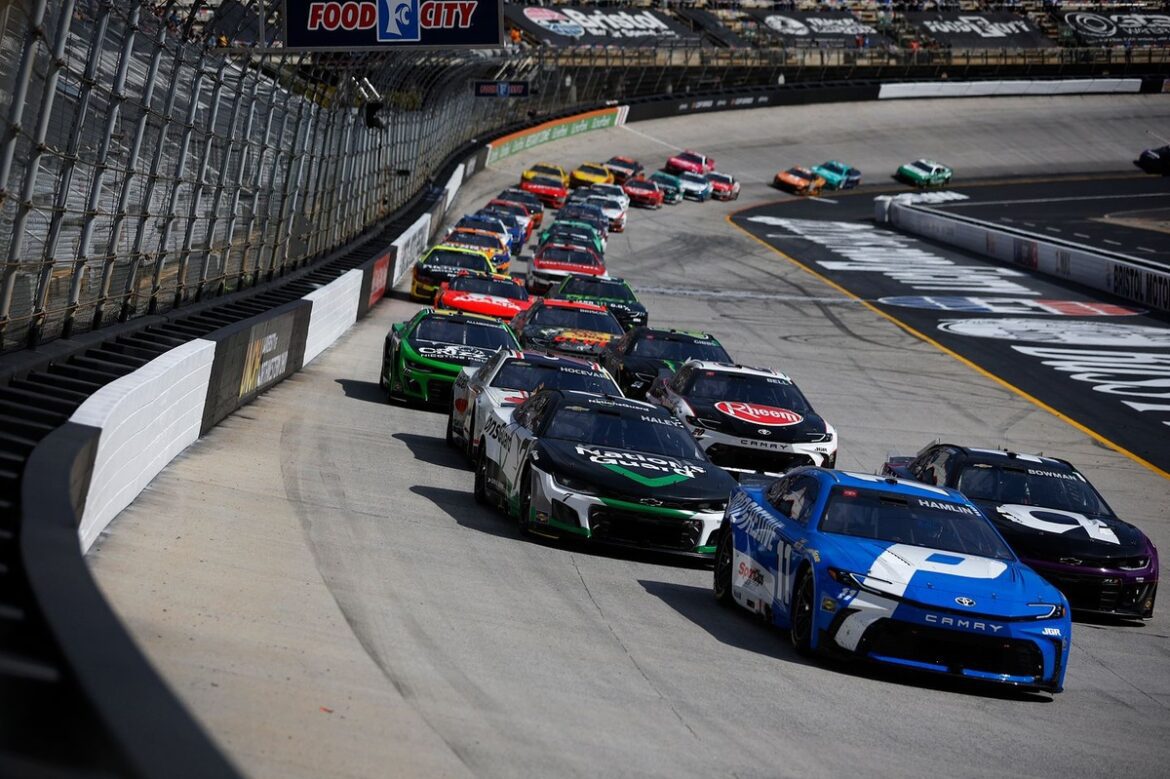For avid NASCAR enthusiasts, the concept of stage racing might seem straightforward, but for newcomers, it can be a bit perplexing. Stage racing is a unique format that has been part of NASCAR for the past eight years, distinguishing it from other motorsport competitions. If you’re new to the scene and curious about stage racing, this guide will help clarify what it entails.
### Understanding the Structure of Stage Racing
In most NASCAR events, with the exception of the Coca-Cola 600—the longest race on the schedule—there are three distinct stages. The length of these stages can vary depending on the specific race, but there’s a general trend in which the third and final stage is typically the longest.
When each stage concludes, NASCAR implements a competition caution. This effectively freezes the current standings as cars cross the finish line under the green and white checkered flag. Following this caution, drivers have the opportunity to enter the pits for fresh tires and a full tank of fuel, if they choose. This process resembles a typical yellow flag situation, allowing teams to strategize their next moves.
### The Rationale Behind Introducing Stages
NASCAR’s decision to incorporate stage breaks was driven by the desire to enhance the spectator experience during races that can last between three to four hours. While the introduction of stages has sparked some controversy—primarily because it disrupts the natural flow of racing—it also provides several advantages.
One of the most significant benefits of stage racing is its ability to eliminate any lead advantages that top drivers may have accumulated. This leads to a more competitive environment, keeping the field tightly packed together and preventing runaway leaders. Additionally, these breaks encourage drivers to push harder earlier in the race, adding to the excitement for fans.
From a broadcasting perspective, stage breaks also offer a strategic opportunity for networks to air commercial breaks without interrupting the race while the cars are still in motion.
### The Importance of Stages for Drivers
Stages are not merely caution periods; they play a crucial role in the championship standings. Points are awarded based on finish positions in each stage, which contributes to the overall championship race. The top ten finishers in every stage earn stage points, with the winner receiving ten points, the second-place driver getting nine, and so forth. Moreover, the stage winner is also awarded a playoff bonus point in addition to the regular stage points. This bonus point can be a valuable asset when it comes to the NASCAR championship rounds, as it provides a buffer against competitors who have not accrued as many playoff points.
### How Stages Influence Racing Strategies
The introduction of stages has significantly altered race strategies. Drivers and teams have had to adapt their tactics to account for these breaks, particularly in road course races or specific oval tracks where pitting under green flag conditions does not lead to losing a lap. In certain scenarios, some drivers might opt for a strategy called “short-pitting,” where they make a pit stop before the conclusion of a stage to gain an advantageous position during the subsequent restart. While this strategy may result in missing out on stage points, drivers believe that the improved track position will pay off later in the race.
Conversely, drivers who are not contending for the lead or are in need of points to bolster their championship standings will often remain on the track to capitalize on any available stage points. This dynamic creates a competitive atmosphere where strategies can differ significantly among drivers.
The presence of stages also encourages teams to focus on fuel conservation, especially on drafting tracks. Knowing when caution flags are likely to occur allows crew chiefs to make more informed decisions about when to pit, often planning to split certain stages in half to optimize performance. However, the pressure to secure every position during these critical moments can lead to aggressive driving, and at times, this has resulted in on-track incidents as drivers push their limits.
### The Impact of Stage Racing on NASCAR Dynamics
Stage racing has transformed the way NASCAR events unfold. The strategic decisions made by teams and drivers throughout the race are now more pronounced, making every stage a mini-race within the larger event. This format not only keeps the competition fierce but also enhances viewer engagement, as each stage break invites fans to analyze strategies and drivers’ performances closely.
Moreover, the regular intervals of caution and competition allow teams to reassess their plans based on real-time data gathered during the race. Adjustments can be made to tire strategies, fuel management, and overall race tactics, ensuring that teams remain competitive right up to the final stage.
### An Evolving Landscape
As NASCAR continues to develop and refine its racing formats, stage racing remains a pivotal element of the sport. The inclusion of stages has led to a more dynamic racing environment, where strategic foresight and adaptability are crucial for success. For new fans, understanding the intricacies of stage racing can greatly enhance their appreciation of the sport and the tactics employed by drivers and teams.
In summary, stage racing has introduced a fresh layer of complexity to NASCAR events. By breaking races into stages, the sport has fostered heightened competition and strategic diversity, ultimately improving the overall experience for both drivers and fans alike. Whether you are a seasoned follower of NASCAR or a newcomer eager to learn, embracing the concept of stage racing is essential for fully enjoying the thrill of the race.
